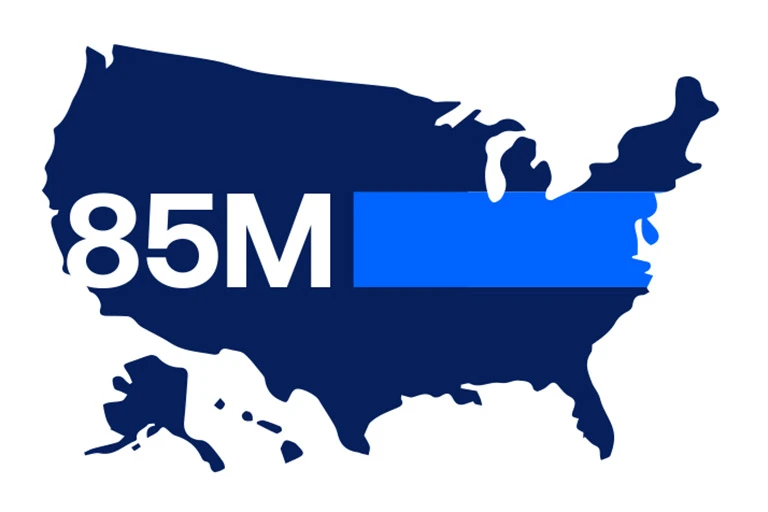“State of the Air” 2025 finds that 85 million people living in 115 counties across 31 states have been exposed to year-round levels of particle pollution that do not meet the annual air quality standard. This is a small improvement over the 90.7 million people living in places that got failing marks in last year’s report, but still a sobering reminder of the widespread, chronic nature of this deadly form of air pollution.
When looking nationwide at all the counties with measurements for this pollutant, the average severity of annual particle pollution is effectively unchanged since last year’s report. By its nature, the year-round measure of average particle pollution is not as changeable from year to year as the daily measure. Variations over time may look smaller, but because they typically represent recurring exposures over many days and weeks, seemingly minor differences can have a big impact on public health.
Annual particle pollution levels are most often highest in places that are subject to multiple sources of emissions all year long, such as from highways, oil and gas extraction, power generation and industry. The additional pollution load from wildfire smoke, though comparatively short-lived in any one location, can strongly influence that location’s annual average. In this year’s report, this influence can be seen reflected in geographic shifts similar to that seen with short-term particle pollution.
Unsurprisingly, given the transport of wildfire smoke across the country, the states with the worst changes from last year’s report are mainly in the north central and eastern parts of the U.S. Ten states, ranging from North Dakota to Maryland, saw the year-round average for fine particle pollution get worse in every one of their counties monitored for this pollutant.
In contrast, though California still ranks near the top for worst statewide average, there were 37 million more people living with improved levels than with worse levels compared with last year’s report. All but one of California’s 42 counties for which comparisons could be made show improvement.
In “State of the Air” 2025, the 25 most polluted cities for year-round particle pollution bucked the worsening trend of recent years by improving an average of about 0.4 micrograms per cubic meter (from 12.35 to 11.98 µg/m3). Thirteen of them, all in western states, improved. Fresno-Hanford-Corcoran and Los Angeles-Long Beach, California, posted their lowest levels ever, though they are still among the worst five. Eleven metro areas worsened compared with their levels in last year’s report. One (Indianapolis-Carmel-Muncie, IN) was unchanged. None of the 25 most polluted cities for this measure posted their worst-ever levels of year-round particle pollution.
Because of the geographic shift in areas of worse or improved particle pollution, there are more shifts in the rankings on the Worst 25 list than usual. Though the four worst metro areas keep their same ranks as in last year’s report, most of the others on the list have moved up or down quite a bit.
Six metro areas experienced levels of air pollution that moved them onto the Worst 25 list. Cleveland, Ohio posted the most dramatic shift in the country, resulting in its rank dropping from 54th to 9th worst. Kalamazoo, Michigan and Brownsville and Texarkana, Texas are all making an appearance on this list for the first time. Missoula, Montana rejoins the list after a three-year absence. St. Louis, Missouri rounds out the additions this year.
Improving enough to leave the list are Augusta, Georgia; Chico, California; Kansas City, Missouri; Las Vegas and Reno, Nevada; Oklahoma City, Oklahoma and Corpus Christi, Texas.

